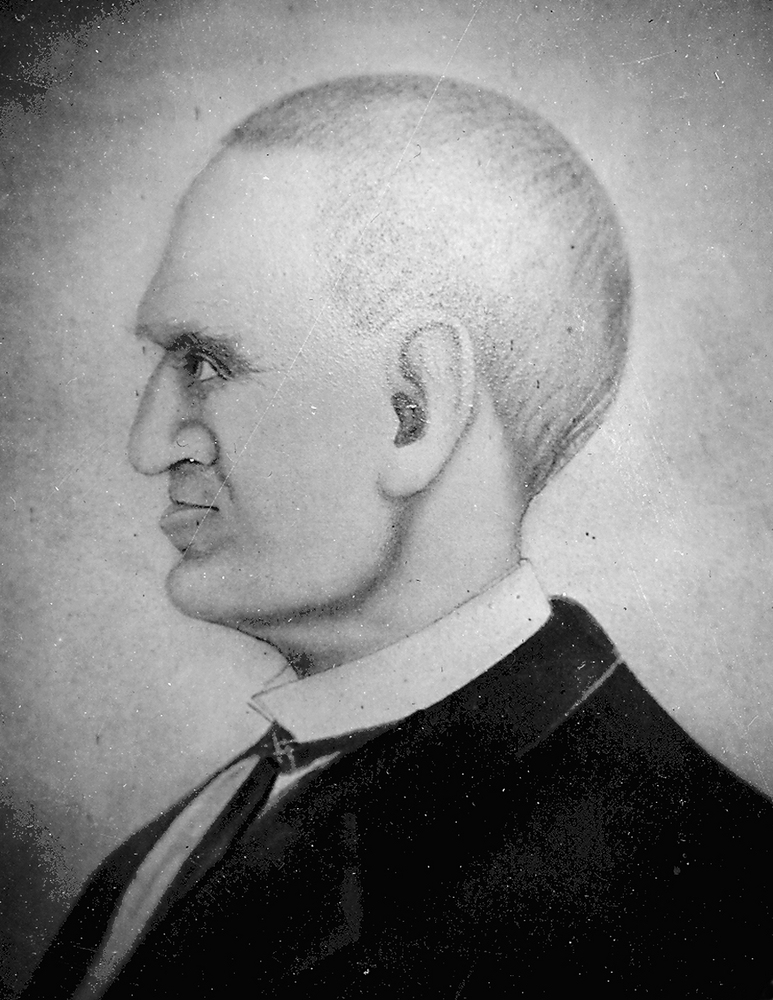
In May 1843 – 170 years ago this month – Jesse Applegate and his brothers and their families left Missouri for Oregon. They were among the early pioneers to Oregon, four years earlier than the emigrants of 1847 in my novel about the Oregon Trail. In fact, 1843 was the first year of significant migration to Oregon; the travelers that year and their lengthy wagon trains became known as “the Great Migration.”
The Applegate party faced many difficulties along the way. The first problem arose because families with livestock could not keep up with emigrants not herding cattle. The wagon train divided into the faster group and the “cow column,” which lagged behind the others. Jesse Applegate was the leader of the cow column.
Jesse Applegate later wrote a reminiscence entitled “A Day with the Cow Column in 1843,” which was published by the Oregon Pioneer Association in 1876, and re-published in the Quarterly of the Oregon Historical Society, Vol. 1, No. 4 (Dec. 1900). In this account, we hear his perspective of a day on the trail, from the time they arose at 4:00am, until the evening watch began after supper at 8:00pm. It is a fascinating story of life on the trail, and one I referred to frequently in drafting my novel.
The greater difficulty the Applegates faced came after they abandoned their wagons at the Whitman Mission, and built boats to float down the Columbia River. One of Jesse’s sons and one of his nephews, both nine years old, drowned when a boat capsized on the Columbia – a frequent occurrence as the boats pitched over rapids in the roiling current. I grew up on the Columbia, but not until after it was dammed. The river today is nothing like what the emigrants of the 19th century faced.

As a result of the tragedy the Applegates suffered on the Columbia, Jesse, who had been a surveyor in Missouri, and his brothers decided to improve the route to Oregon. In 1846, the Oregon Provisional Legislature authorized Jesse to survey a southern route into Oregon City. The route he blazed passed from Fort Hall, in what is now Idaho, along the Humboldt River in present-day Nevada, before moving into California and through southern Oregon into the Willamette Valley. This route came to be known as the Applegate Trail.
Here is part of the letter Jesse Applegate wrote dated August 10, 1846, “to future emigrants” at Fort Hall:
Gentlemen:
The undersigned are happy to inform you that a southern route to the Willamette, has just been explored, and a portion of the emigration of the present year are now upon the road. . . .
The new route follows the road to California about 320 miles from this place, and enters the Oregon Territory by the way of the Clamet [Klamath] Lake, passes through the splendid vallies of the Rogue and Umqua rivers, and enters the valley of the Willamette near its south eastern extremity.
The advantage gained to the emigrant by this route is of the greatest importance—the distance is considerably shortened, the grass and water plenty, the sterile regions and dangerous crossings of the Snake and Columbia rivers avoided, as well as the Cascade Mountain—he may reach his place of destination with his wagon and property in time to build a cabin and sow wheat before the rainy season. This road has been explored, and will be opened at the expense of the citizens of Oregon, and nothing whatever demanded of the emigrants. . . .
Many emigrants used the Applegate Trail to get to the California gold fields after the 1848 discovery of gold. In fact, Jesse and his brother Lindsay both left Oregon in 1848 to seek their fortunes in California. They did not stay, but returned to Oregon in 1849 to farm in the Umpqua Valley.
The Applegates’ tale has fostered the imagination of other writers in addition to myself. Jesse’s great-great-granddaughter, Leta Neiderheiser, published a book, Jesse Applegate: A Dialog With Destiny, that recounts his life.




These people were surely divinely driven! No human will could have been so motivated!
You discover the most interesting pieces of history, Theresa. Thank you.
[…] Today I am hosting Christi Corbett, author of the new novel, Along the Way Home, about travelers on the Oregon Trail in 1843 (the year of Jesse Applegate’s migration). […]
[…] A few years later, William T. Newby, who traveled in the Great Migration of 1843, wrote: […]
[…] travelers were rescued, but others making the river voyage were not so lucky. Jesse Applegate lost a son and nephew to the Columbia. This tragedy drove him to create a southern route into […]
[…] example, in 1843, Jesse Applegate’s family spent their first winter at the old Methodist mission upriver from where Oregon City would […]
[…] published in the Quarterly of Oregon Historical Society, Vol. 1-2, p. 371, available online, Jesse Applegate described in detail what happened at the end of a day on the […]
[…] with the Great Migration of 1843, thousands of emigrants set out on the 2000-mile journey to Oregon, but most ventured into the […]